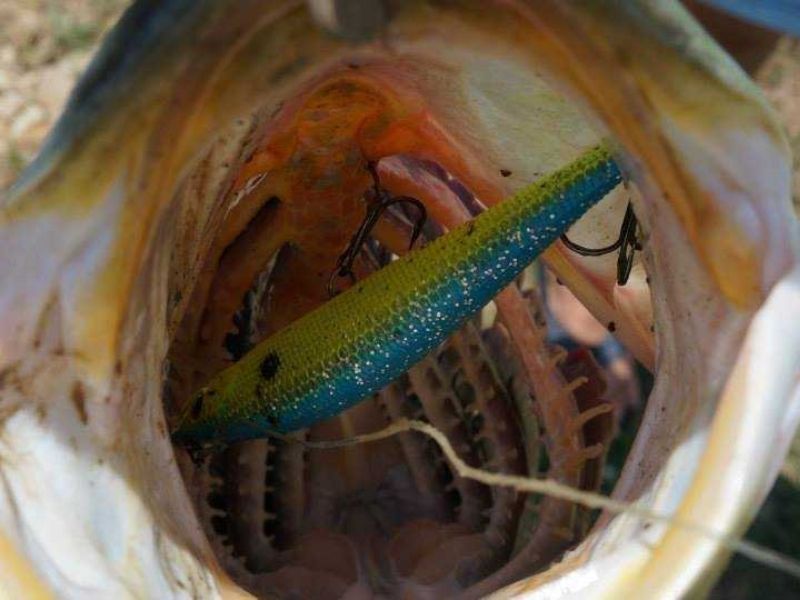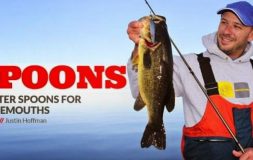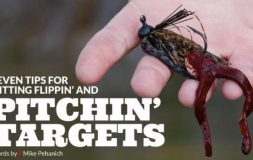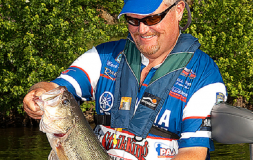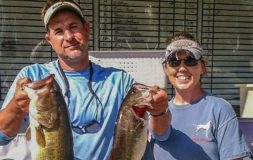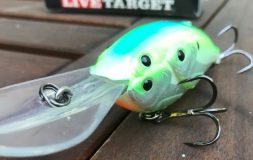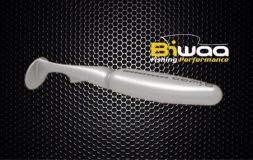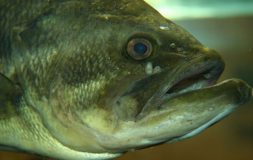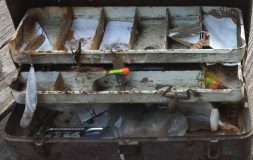Fine-tuning your jerkbait for cold water bass
Written by Andrew Schadegg
When the topic of winter or cold water bass fishing comes up, inevitably someone is going to discuss how their specific jerkbait technique of ripping and pausing is the best. Get ready to roll your eyes when they talk about “cadence” and “letting the fish tell you what they want.” Lots of clichés and phrases that are dropped that sound astute, but tend to lose their meaning after being rehashed over and over again.
Particularly in the winter, getting to know your target (and the food they target) is essential to putting fish in the boat. So what does it all mean? How can you make the adjustments in the wintertime that will help you make your jerkbait fishing more effective?
Understand Bass Biology
Bass react in the winter in much the same way as people do. They’re cold, they’re hungry and they don’t want to move very far or very often to get what they need. Being cold-blooded animals, bass’ body temperature matches that of their environment. In the winter months, the lowering of their body temperature also lowers their metabolism, so they don’t have to feed as often as they do in the warmer months.
As a result, opportunistic feeding is the name of the game. Bass will exert the least amount of energy possible to get what they need and then go back to their sedentary winter lives. Imitating the way natural bass forage acts in the winter is the way to get those finicky, cold fish to react to your jerkbait presentation.
Understand Baitfish Biology
When fishing a jerkbait, the entire concept is based around mimicking a dying or distressed baitfish. In the summertime when the water is warm, you can get aggressive and bring the bait back quickly to the boat. Schools of shad or minnows, are more likely to be faster and will naturally swim away when approached by a speeding predator ready to eat.
As the water temp dips down to winter levels, however, the shad and baitfish populations in lakes all over the country start to slow down and die-off. This causes the bait to be scarce and creates opportunity for a hungry bass to feed on weakened prey that might have drifted away from the school or swimming irregularly in the water column, as it is dying.
Understand Jerkbait Methodology
Knowing about how bass and baitfish react in the winter is the key to presenting your jerkbait properly. When the metabolism of the bass is low, they become lethargic and feed sparingly. They are not interested in using a lot of energy, so your jerkbait presentation has to be slowed way down. This is where it gets tough for many anglers, who struggle with being patient enough to wait it out. After you make your initial cast, give the jerkbait a couple of rips to get it down to the desired depth. Then wait. Wait some more….and then keep waiting. Letting that bait sit in the water column for up to 20 seconds, 30 seconds and even a minute. Then give it one small twitch, maybe two and then wait some more. This makes the bait look natural, like that dying shad or minnow.
This is where the clichés come in. Adjust your “cadence” to how the fish are responding to the bait. If you catch a fish after popping it twice and letting it sit for 10 seconds, try repeating that same rhythm the next time. Mix it up and see what works the best. Visualize that every time you have your bait stopped or paused, that there is a bass nearby rising up from the bottom and looking at it. Underwater cameras have shown this very thing occurring frequently in the winter. Bass will sometimes stare at a suspended jerkbait for minutes, before finally deciding to commit.


